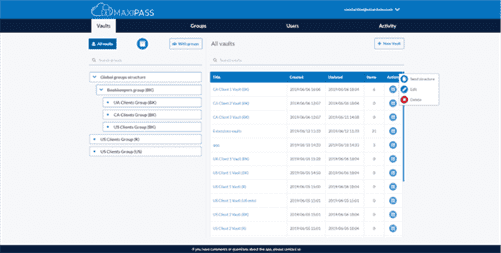Without a planning phase, it is difficult to have an idea of what needs to happen and when it needs to happen. Lean is about only working on what must be worked on at that specific moment. The project team is focused on finding opportunities to eliminate waste, to drop unnecessary things like meetings, and minimising documentation. The difference with the Agile approach in software is the focus on customer satisfaction throughout the entire lifespan of a system. The framework is structured in a methodical way, and is used to offer an outline for the development and adjustment of technical and non-technical components of a high-quality system.
After deployment, the launch may involve marketing your new product or service so people know about its existence. If the software is in-house, it may mean implementing the change management process to ensure user training and acceptance. The software development life cycle (SDLC) is the process of planning, writing, modifying, and maintaining software. phases of system development life cycle Developers use the methodology as they design and write modern software for computers, cloud deployment, mobile phones, video games, and more. Systems analysis and design (SAD) can be considered a meta-development activity, which serves to set the stage and bound the problem. SAD interacts with distributed enterprise architecture, enterprise I.T.
Models
Furthermore, developers are responsible for implementing any changes that the software might need after deployment. Developers must now move into a maintenance mode and begin practicing any activities required to handle issues reported by end-users. The information system will be integrated into its environment and eventually installed. After passing this stage, the software is theoretically ready for market and may be provided to any end-users. The analysis stage includes gathering all the specific details required for a new system as well as determining the first ideas for prototypes. Fundamentally, SDLC trades flexibility for control by imposing structure.

However, technology has evolved, systems have become increasingly complex, and users have become accustomed to well-functioning technology. Models and frameworks have been developed to guide companies through an organized system development life cycle. Today, the traditional approaches to technology system development have been adjusted to meet the ever-changing, complex needs of each unique organization and their users. Below you will find sequential steps to SDLC, but each company will vary in their process. Software development can be challenging to manage due to changing requirements, technology upgrades, and cross-functional collaboration.
What are the stages of a systems development life cycle?
During this phase, the system is continuously being updated to ensure that it remains relevant and useful to end-users and continues to meet their changing needs. As part of a continuous improvement process, the Enhancement (Upgrade) phase provides a chance to continuously improve the system. Furthermore, the Enhancement (Upgrade) phase ensures that the system remains competitive in the technology landscape as new technologies and approaches emerge. The iterative lifecycle model starts with the implementation of a small set of new software requirements, and iteratively improves the evolving versions until the new system is fully implemented.
- If more people who know and use the system are present, the greater the chances are of finding valuable improvement points.
- These elements describe the system in sufficient detail that developers and engineers can develop and deliver the system with minimal additional input.
- The information system will be integrated into its environment and eventually installed.
- This can include handling residual bugs that were not able to be patched before launch or resolving new issues that crop up due to user reports.
- Our developers and specialists have a track record of building innovative software solutions that perfectly fit our clients’ business goals and requirements.
- This requires a lot of research and planning to ensure that your final product meets your expectations (and those of your customers).
Not just limited to purely technical activities, SDLC involves process and procedure development, change management, identifying user experiences, policy/procedure development, user impact, and proper security procedures. Books such as David Avison and Guy Fitzgerald’s Information Systems Development and Alan Daniels and Don Yeates’ Basic Systems Analysis, delve into the intricacies of information systems development lifecycles. This article will provide an in-depth analysis of the history, definition, phases, benefits, and disadvantages, along with solutions that support the system development life cycle. DevSecOps is the practice of integrating security testing at every stage of the software development process. It includes tools and processes that encourage collaboration between developers, security specialists, and operation teams to build software that can withstand modern threats. In addition, it ensures that security assurance activities such as code review, architecture analysis, and penetration testing are integral to development efforts.
What is the software development life cycle (SDLC)?
That is why it’s highly recommended that project managers engage a dedicated team of professional developers. Such a team will possess enough expertise and knowledge to launch a first-class software product that perfectly corresponds to all your expectations, needs, and goals. In traditional software development, security testing was a separate process from the software development lifecycle (SDLC). The security team discovered security flaws only after they had built the software. This led to a high number of bugs that remained hidden as well as increased security risks.

Another interesting aspect of the spiral model is its radius which represents the costs of the project while the angular dimension sheds light on the progress being made on the project in each current phase. In the design phase, project members define the structure of project components as well as key elements of the system by defining the interfaces that will exchange data within the workflow. It’s very common for the project teams to use UML diagrams in the design phase to design the system’s architecture. To achieve a comprehensive planning cycle, members of the project need to have a deep understanding of what tasks the future information system needs to solve.
Analysis Stage
Before we even begin with the planning stage, the best tip we can give you is to take time and acquire proper understanding of app development life cycle. Each stage in the SDLC has its own set of activities that need to be performed by the team members involved in the development project. While the process timeline will vary from project to project, the SDLC generally follows the seven stages outlined below. There are seven stages in the SDLC and six common models that are used for different projects. In this guide, we’ll go through each stage and model to give you an overview of what becoming a software developer entails. System assessments are conducted in order to correct deficiencies and adapt the system for continued improvement.
Technical Feasibility – confirms the system will perform and verifies there are no production barriers. Economic Feasibility – determines the positive economic benefits that the system will provide (cost benefit analysis). In the ideal situation, execution is so smooth that no effort is required when the integration happens.
System Development Life Cycle: Maintenance
But before we run and take off by explaining each of the SDLC phases, let’s first define what a system is. By industry standards, a system is a combination of hardware, software, and human resources that perform the assigned tasks of collecting, processing, and displaying information. https://www.globalcloudteam.com/ Additionally, the development phase marks the initiation of the second section of the project. This is the phase where the end users will discuss and determine the essential hardware and software structure, the networking capabilities, processing and procedures for the system.
From a research standpoint, it is crucial to monitor the system to gain an understanding of whether it is benefitting the business as expected and how the performance is influencing workflow. For the first few months after launching a new system, the business systems analyst should report on how it is running and the difference it is making. Even though testing should have resolved any issues that might arise, it is still important to monitor the new system to ensure it is operating correctly. It is also important that the system undergoes frequent maintenance so that can continue to run smoothly. The business systems analyst should also look at what resources are needed while remembering what is available, and how it can be used. The Smartsheet platform makes it easy to plan, capture, manage, and report on work from anywhere, helping your team be more effective and get more done.
Disadvantages of a Structured System Development Life Cycle
The waterfall approach means each phase must be completed before the next phase can begin. The correct use of the System Development Life Cycle has a large number of benefits. The implementation of a lifecycle for a system opens up a lot of possibilities, including the ability to plan and organise structured phases and smart goals beforehand. These can be solved during the maintenance phase when the whole system is refined to improve performance, or to meet new requirements. Sometimes staff will need additional training to meet this goal, new procedures must be put in place, or updates must be made.